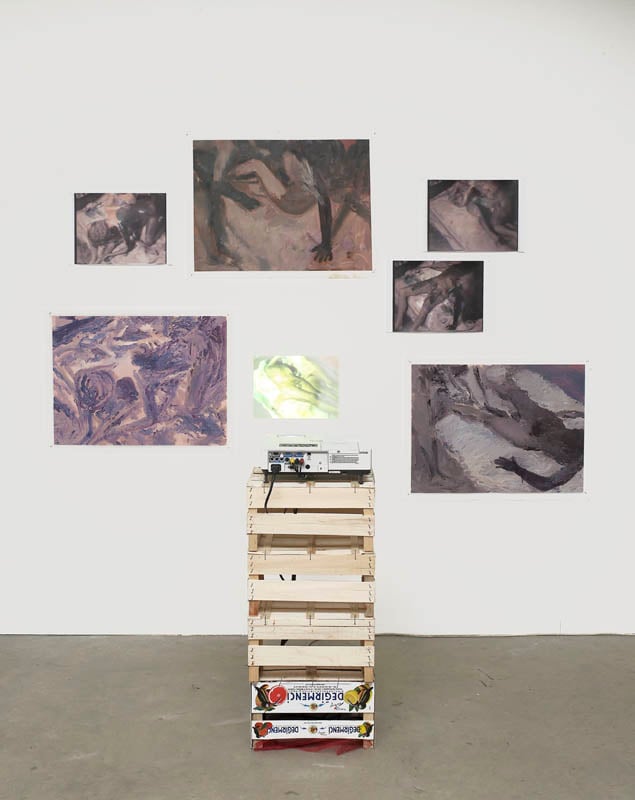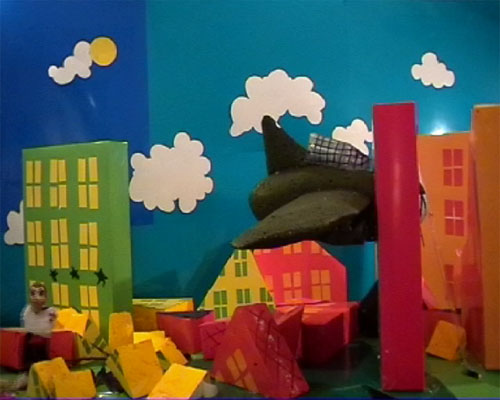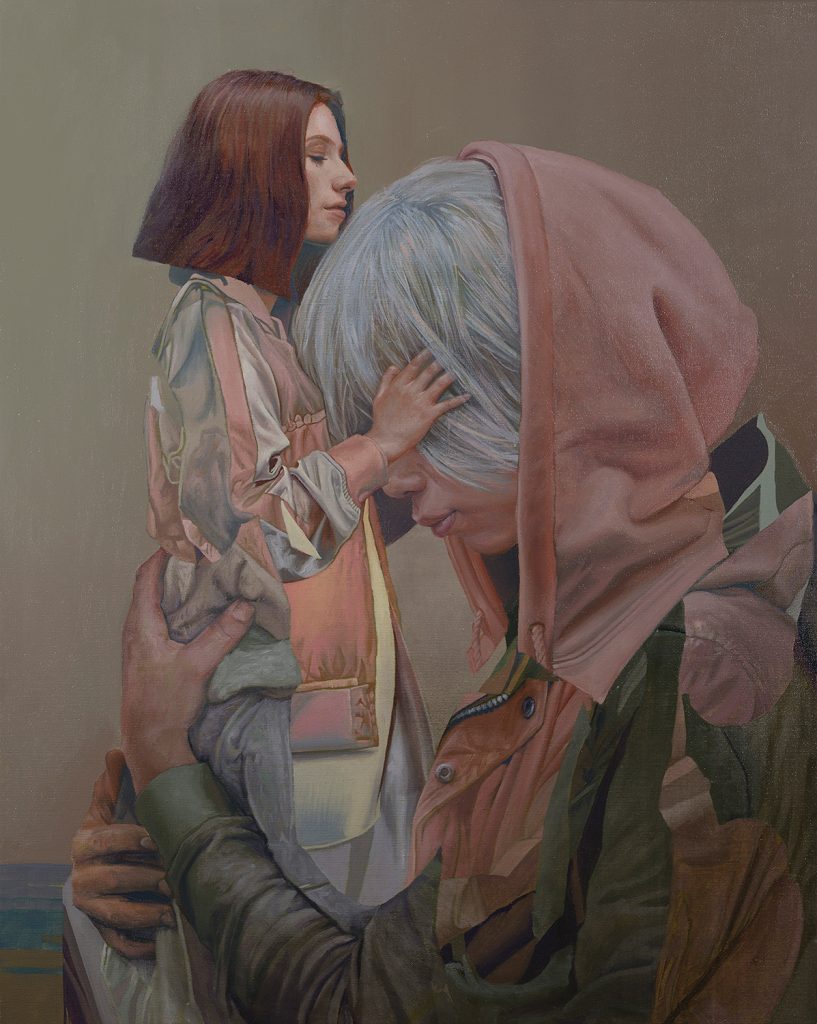Untitled (After Paul Schultze Naumburg's Kunst und Rasse, 1928)
2006 - Painting (Painting)
48 x 38 cm
Felix Gmelin
In Untitled (after Paul Schultze Nuremberg’s Kunst) (2006), from a larger series of diptychs, Gmelin addresses the notion of entartete kunst ( “Degenerate Art”) . Each diptych juxtaposes a portrait of a person considered to be mentally handicapped with a painting that was branded by the Nazi regime as degenerate. Gmelin’s source for these images is Kunst und Rasse (“Art and Race”), a book by Paul Schultze Naumburg published in 1928. Naumburg, one of Hitler’s architects, was a member of the Nazi party and became director of the Weimar Kunsthochschule in 1930. In this capacity he organized an exhibition of 70 ‘degenerate’ artworks from the Weimar Castle Museum. His book was something of a groundbreaker for the Nazi position on modernism. In the book he juxtaposed contemporary works of art with clinical photographs of people with medical deformities. He thus defined the art as pathological. Working from black and white reproductions from the original book, Gmelin himself makes another reproduction in paint. Just as the original thesis, that modern artists were equivalent to mentally handicapped people, is a distortion of the truth, Gemiln distorts his images one stage further. The grey painting, which represents the medically deformed person, is executed in a painterly way. Thus he has rendered a mentally handicapped person in a manner that in the 1920s and 1930s would have demonstrated a modern artist’s degeneracy and declares her as a subject fit for art. Paradoxically, he has disguised the mental abnormality of the person by juxtaposing the image with an interpretation of a modernist work leaving the viewer, for a moment, wondering which image was sourced from a painting and which from a photograph of a living person. The diptych is thus deeply ironic as well as poignant. But by treating the two images in a similar, painterly way, Gmelin also neutralizes the impact that the juxtaposition of the two images has when viewed on the page of the book. Gmelin thus offers a comment on how in our present culture art no longer has the capacity to shock; that anything goes. Transgression is more or less a thing of the past.
With a degree in painting and inspired by so-called institutional criticism, Felix Gmelin is interested in the possibilities of painting as a form of resistance and its direct relation to a form of socio-political reality. He is frequently known to rework the experiences of his youth into his art. In a critical, yet personal investigation, he subtly unravels the complicated interweaving of self-development, socialization and emancipation with which he grew up in the late 1960s and 1970s. Gmelin’s first substantial work in which reproduction served as a productive impetus was Art Vandals (1996-1998), a series of 12 paintings and one object, modeled after examples of modern and contemporary artworks, all of which had been vandalized. His interest in degenerate art also falls within the interest of vandalism. The emptying of meaning is a consistent theme in his work, as a number of Gmelin’s paintings. Felix Gmelin was born in Heidelberg in 1962 and has lived in Stockholm, Sweden, since he was nine.
Colors:
Other related works, blended automatically
» see more

© » KADIST
Felix Gmelin
2004Ambiguous Gestures takes as its point of origin a film Gmelin discovered in his father’s archive...
Related works sharing similar palette
» see more

© » KADIST
Kaoru Arima
2015Arima’s free brushstrokes gesture towards traditions in Expressionist painting, and Ticket could be seen as an attempt at “pure painting” in which the aesthetics of the medium supersede content...
Other works by: » Felix Gmelin
» see more

© » KADIST
Felix Gmelin
2004Ambiguous Gestures takes as its point of origin a film Gmelin discovered in his father’s archive...
Related artist(s) to: Felix Gmelin » Anri Sala, » Jason Rhoades, » Jens Haaning, » John Baldessari, » Joseph Beuys, » Maurizio Cattelan, » Nathalie Djurberg, » Richard Long, » Rirkrit Tiravanija, » Rivane Neuenschwander
» see more

© » KADIST
John Baldessari
1997In One Must , an image of a pair of scissors, accompanied by the words of work’s title, poses an ominous question about the relationship between the image and the text...

© » KADIST
Nathalie Djurberg
2004Apparently Djurberg’s mother made a puppet theater and traveled around Göteborg performing during her childhood...

© » KADIST
Rivane Neuenschwander
2007Mapa-Mundi BR (postal) is a set of wooden shelves holding postcards that depict locations in Brazil named for foreign countries and cities...
Related works found in the same semantic group
» see more

© » KADIST
Tony Cokes
2022Tony Cokes’s long-form, multi-channel work Some Munich Moments 1937–1972 forms a layered montage of historical and contemporary source material exploring different periods of Munich’s history...

© » THEARTNEWSPER
German Academy of Arts opens Otto Dix archive—and recalls a scandal Art market Museums & heritage Exhibitions Books Podcasts Columns Technology Adventures with Van Gogh Search Search Otto Dix news German Academy of Arts opens Otto Dix archive—and recalls a scandal Dix’s war painting The Trench, lost during the Second World War, is in focus at the opening Catherine Hickley 7 February 2024 Share Otto Dix's Der Schützengraben (The Trench) (1923) provoked a strong reaction when it was first displayed 100 years ago Photo: Hugo Erfurth, Akademie der Künste Berlin, Otto-Dix-Archiv A century after Otto Dix’s First World War painting The Trench (1923) provoked an outcry when it was displayed at the Prussian Academy of Arts in Berlin, the institution's successor, the Germany Academy of Arts , is opening to the public the inventory of the artist's works that he compiled—somewhat grudgingly...

© » KADIST
Mary Ann Aitken
2009Untitled (Diptych) by Mary Ann Aitken is a pair of paintings; one entirely abstract and the other a hybrid of representational and abstract elements...

© » KADIST
Glenn Ligon
2000Glenn Ligon’s diptych, Condition Repor t is comprised of two side-by-side prints...




